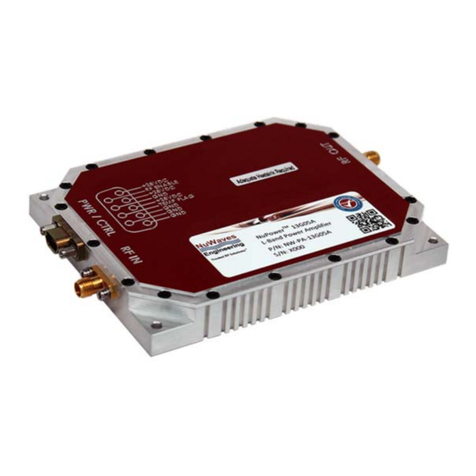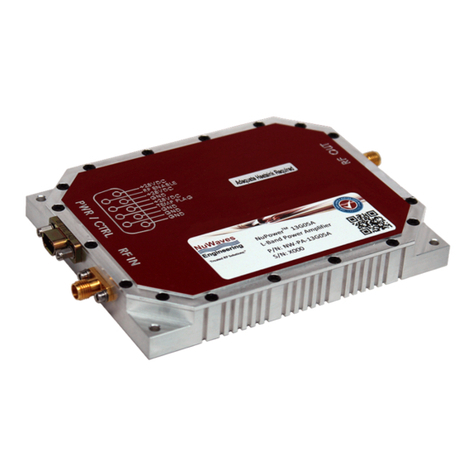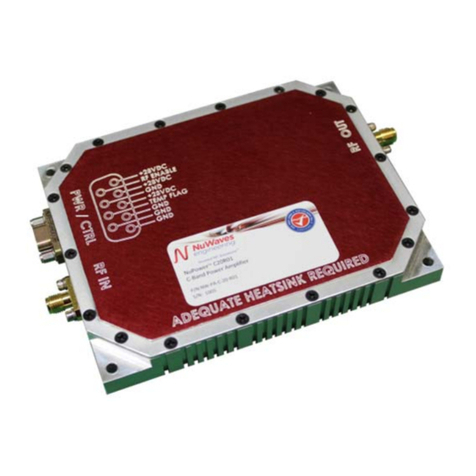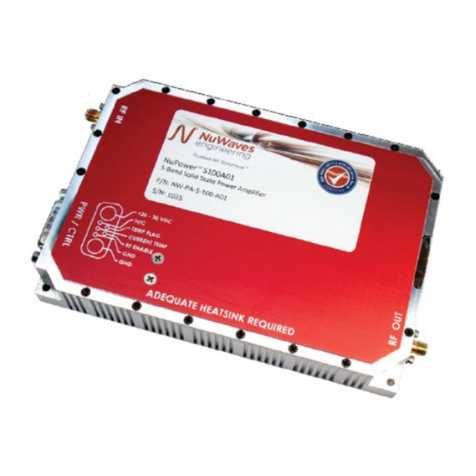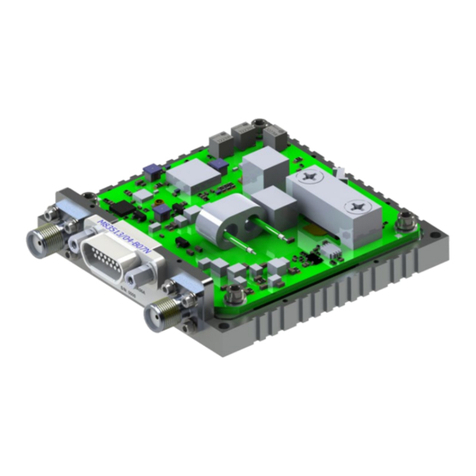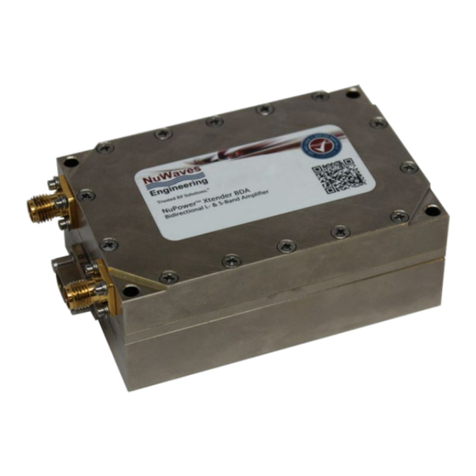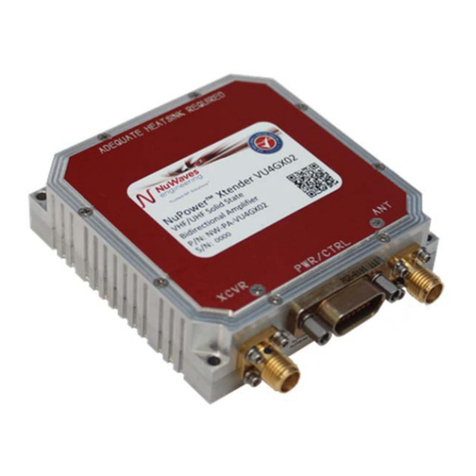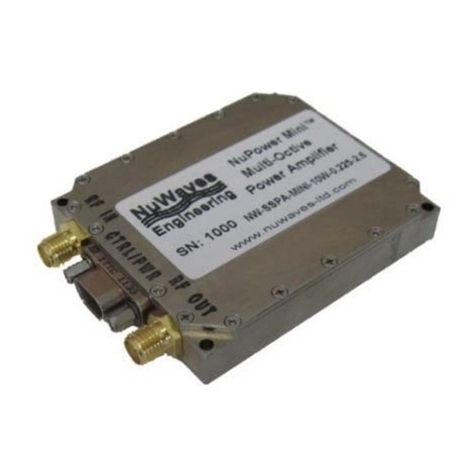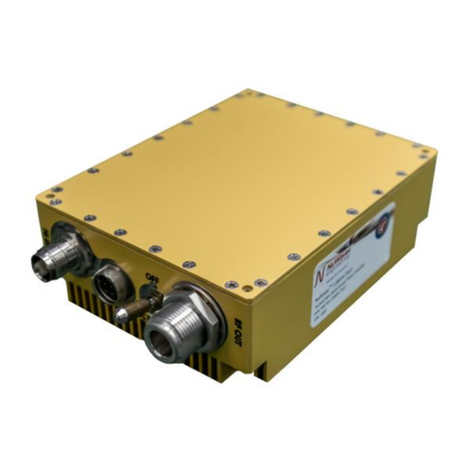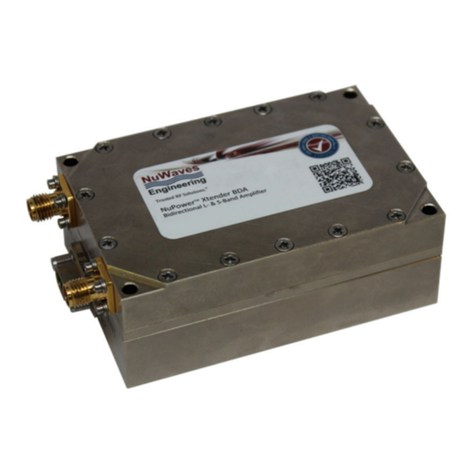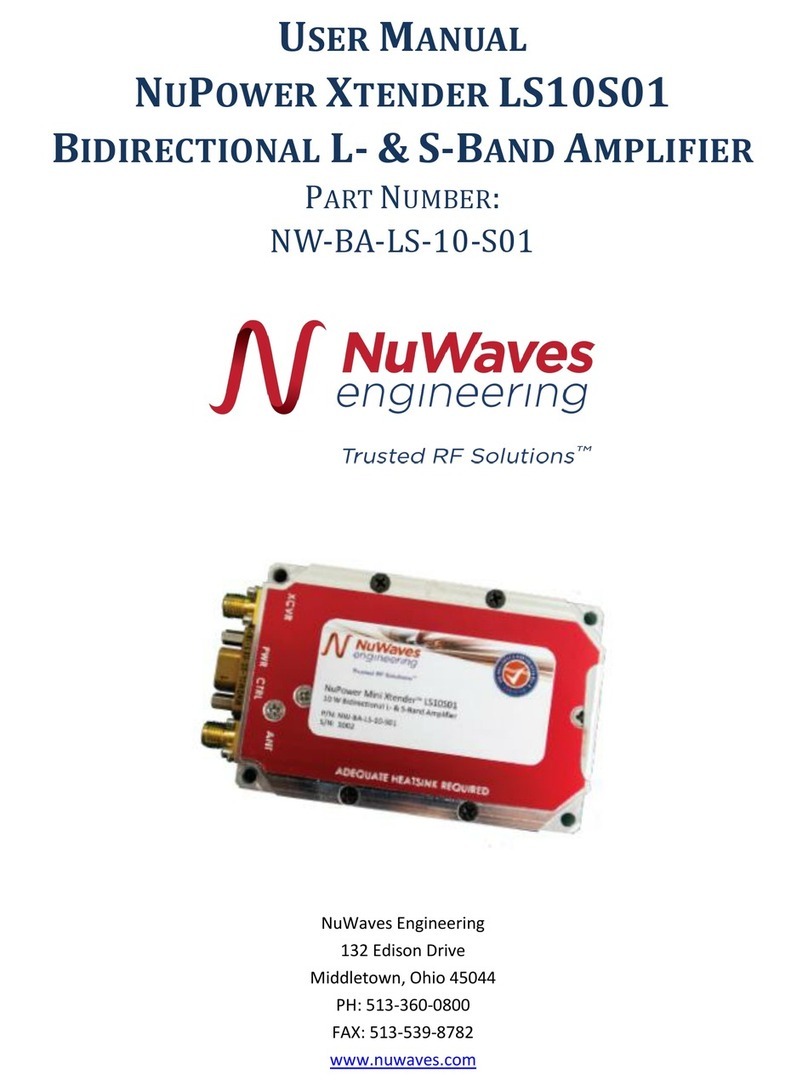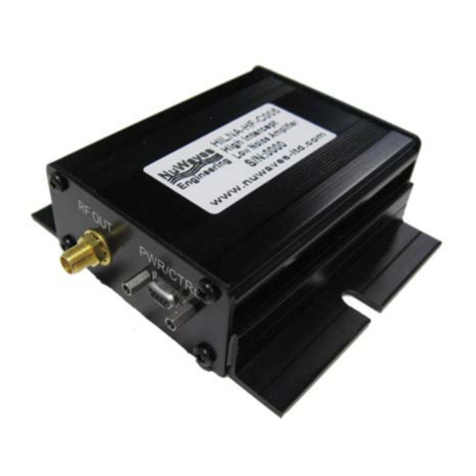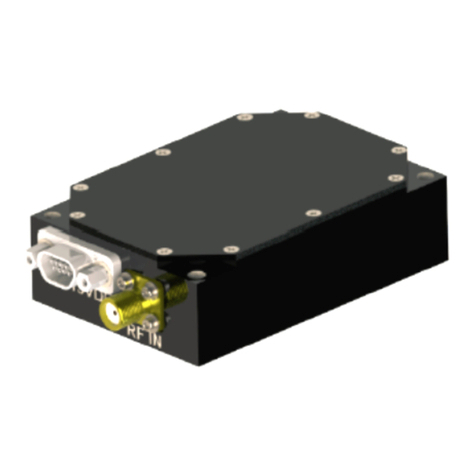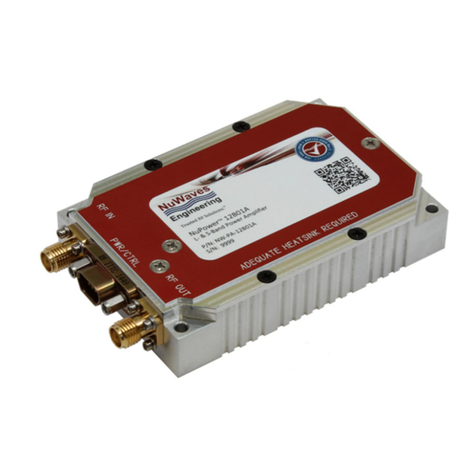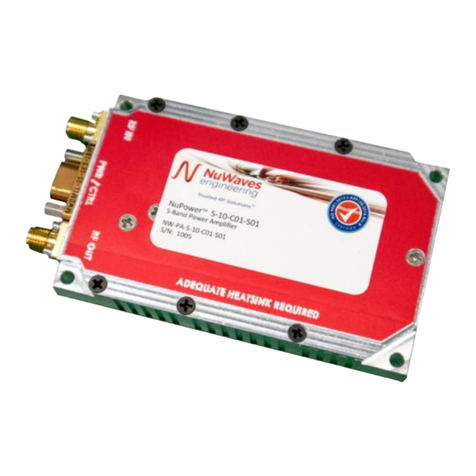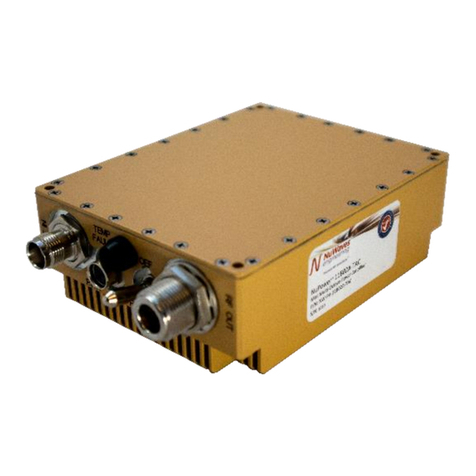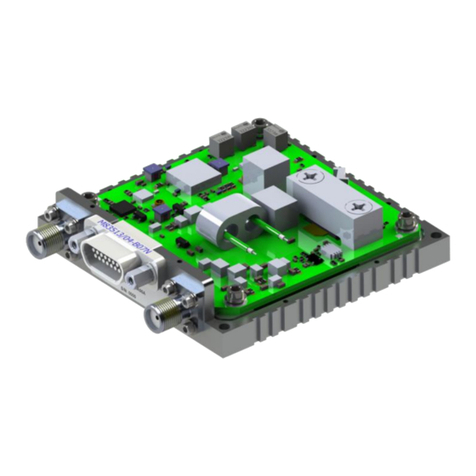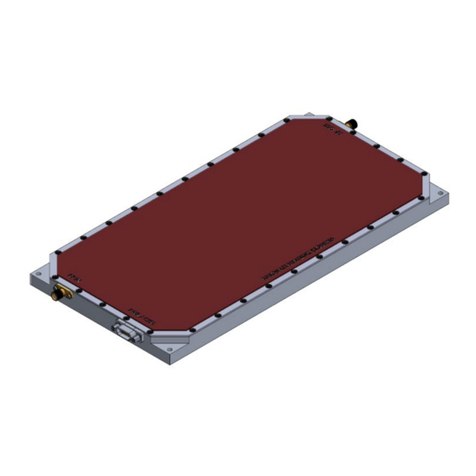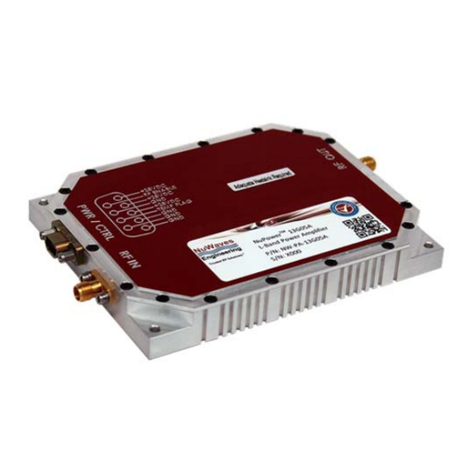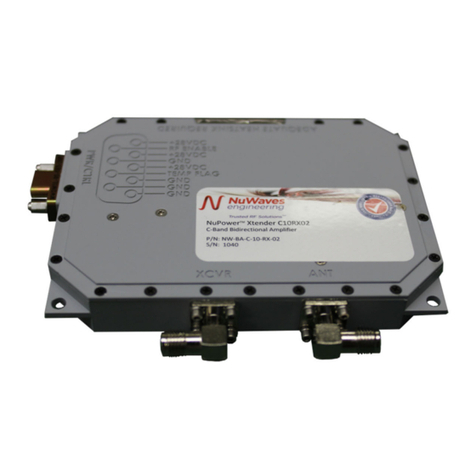
NuPower
TM
12B01A‐D30UserManual
Rev1.0
6
3 SETUP AND OPERATION
This section provides specific details for proper operation of the NuPower 12B01A‐D30 module.
Followingtheseguidelineswillpreventdamagetothepoweramplifierorexternalequipment.
3.1 POWER SUPPLY REQUIREMENTS
TooperatetheNuPower12B01A‐D30,ensurethatthepowersupplyhasadequateoverheadtosource
thecurrentdemandoftheRFpoweramplifier.Thepowersupplysourcemustprovideatypicalvoltage
of+28VDCwithgreaterthan3ampscapability.
3.2 CONNECTING A PROPER LOAD TO THE ANTENNA TERMINAL
TopreventdamagetothePA,theantennaterminalmustbeterminatedintoa50Ωload.Examplesofa
properloadinclude:
Directly connecting to an antenna specified for the frequency range (225 MHz to 2400 MHz).
ConnectingtoaninappropriateantennamayresultindamagetothePAmodule.
Connectingtoaproperantennathrougha50Ωtransmissionlineorcoaxialcable.Avoidusing
damagedcablesorcorrodedconnectorswhileattachingtheunittoanantenna.
Terminating the antenna terminal into a 50 Ω power attenuator with minimum 20 dB
attenuation.
ConnectingtoaloadcapableofdissipatingtheRFpowerfromthePAmodule.Loadscapableof
handling20Watts(min)arerecommended.
3.3 POWERING‐UP THE 12B01A‐D30
The NuPower 12B01A‐D30 must be terminated to a proper load before power is applied. Refer to
Section3.2forthespecificationsoftheproperload.AfterthePAisproperlyterminated,theinterface
cablecanbeconnectedtotheunitandpowercanbeapplied.ThePAisnowreadyforoperation.
3.4 TRANSMIT TURN‐ON TIME
Caution:DonotapplytransmitdatauntilthePAmoduleisatfullpower.Thiswillprevent
lossofdataatthebeginningofamessage.
The NuPower 12B01A‐D30 is at full power approximately 500 µS after the RF Enable line goes low
(ground).Therefore,transmitdatacanbeappliedtotheinputafter500µSwithoutlossofdata.
